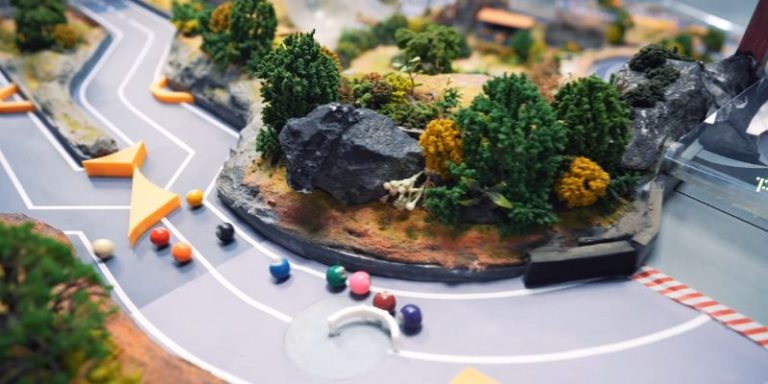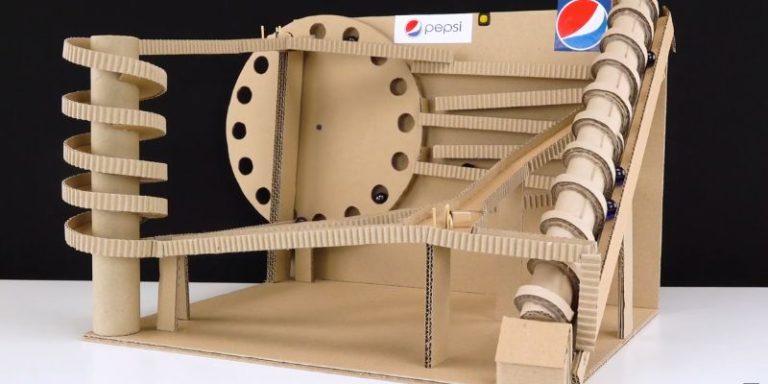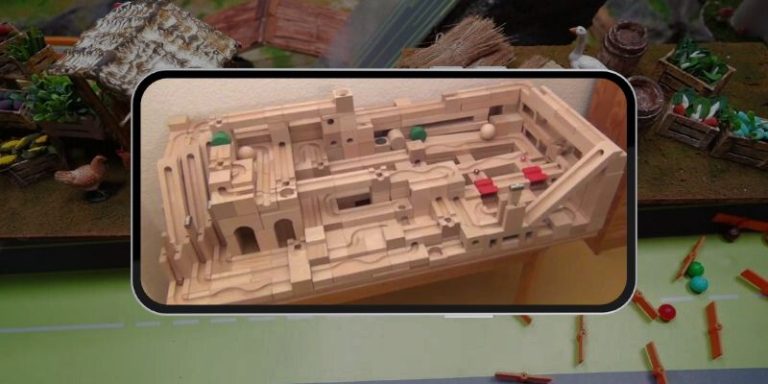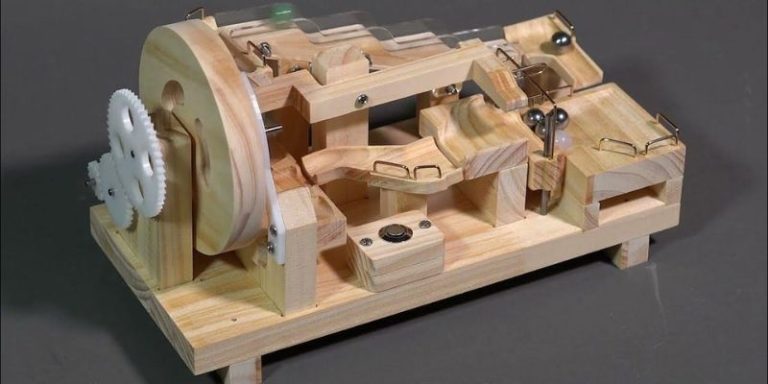How to build an indoor marble racing track: Step-by-step
An indoor marble racing track is a custom-built course designed for marbles to race through ramps, curves, and obstacles – all within the comfort of an indoor space. Unlike outdoor tracks, indoor setups are weatherproof and accessible year-round, making them perfect for continuous play and competition.
Building an indoor track is not just about racing – it’s about creativity and problem-solving. Indoor tracks allow for endless customization; you can experiment with different materials, layouts, and themes to make every race unique and exciting.
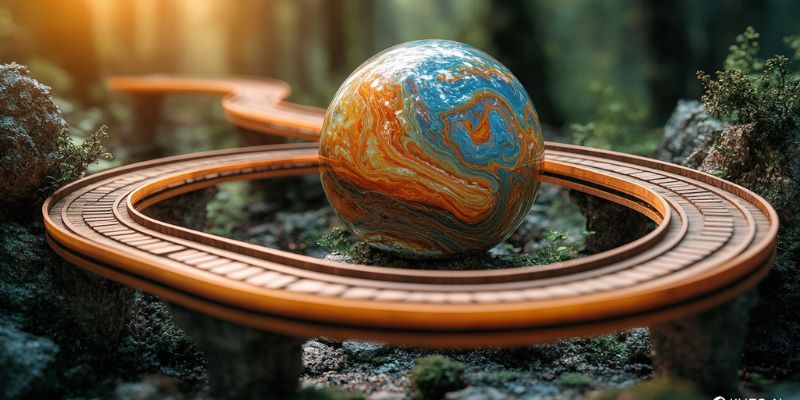
Planning your indoor marble racing track
Before diving into building your indoor marble racing track, it’s essential to plan carefully. A well-thought-out plan ensures that the track is fun but also safe and functional. Here are the factors to consider:
Space consideration
Start by choosing the right space for your tracks based on the size and complexity of your design.
- Small spaces: Use a tabletop, desk, or shelf for compact tracks with simple designs.
- Medium spaces: Set up in a living room, bedroom, or hallway for mid-sized tracks with more curves and obstacles.
- Large spaces: For elaborate, multi-level tracks with expensive layouts, use a basement, garage, or dedicated playroom.
Make sure that area is free from clutter and has enough room for spectators if you want to plan to host races.
Track purpose
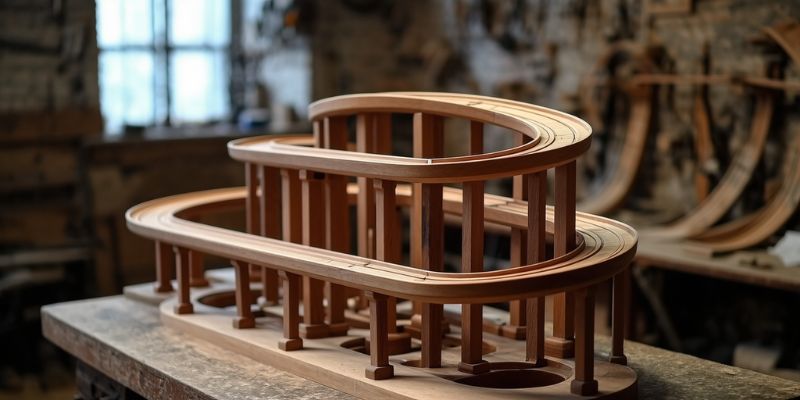
Defining the purpose of your track will help you decide on its design and complexity.
- Casual play: Keep it simple with straightforward ramps and gentle curves for relaxed, everyday racing.
- Competitive racing: Include timed sections, obstacles, and speed-boosting features for a more challenging experience.
- Creative designs: Focus on themes, multi-level layouts, or interactive elements for visually exciting and imaginative tracks.
Knowing the goal of your track helps you choose the right materials and design features to enhance the racing experience.
Safe and durability
Building a safe and sturdy track is crucial, mainly if younger racers use it frequently.
- Stable bases: Use heavy or wide bases to prevent the track from tipping during races.
- Secure assembly: Fasten all parts tightly with glue, tape, or connectors to avoid loose sections that could disrupt the race.
- Protective barriers: Add side walls or guardrails to prevent marbles from flying off the track and potentially causing damage.
- Durable material: Choosing long-lasting material like wood, PVC, or sturdy plastic for builds that can withstand repeated use.
Focusing on safety and durability ensures that your indoor marble racing track remains functional, safe, and fun for everyone.
Proper planning is the foundation of an exciting and reliable indoor marble racing track. You can create a track that delivers endless fun, competition, and creativity by thoughtfully considering your space, purpose, and safety measures.
Materials and tools you need
Building an indoor marble racing track doesn’t require fancy equipment, but using the right materials and tools can create a stable, exciting, and visually appealing track.
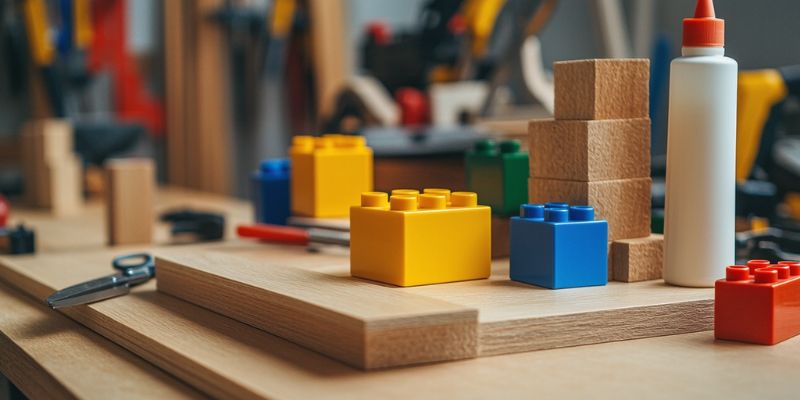
Basic building materials
Your choice of materials will shape how your track looks and function.
- LEGO bricks: Perfect for customizable, modular tracks with ramps, curves, and tunnels.
- Wooden planks: Provide a sturdy, durable base for more permanent and professional-looking tracks.
- Plastic tracks: Pre-made plastic race tracks are easy to assemble and great for smooth, fast racing.
- Foam tubes or pool noodles: Lightweight and flexible, ideal for bumping ramps and curves.
- Cardboard: A budget-friendly and versatile option for DIY tracks with creative layouts.
Pro tip: Mixing different materials can give you track more variety and make the race more exciting.
Track supports
Keeping your track stable is key to smooth and uninterrupted racing.
- Glue: Hot glue guns or craft glue for securing smaller pieces.
- Tape: Duct tape or double-sided tape to quickly attach sections
- Clamps: These are useful for holding heavier materials like wood or plastic while they are set.
- Connectors: LEGO connectors, brackets, or clips to join modular sections securely.
Strong and stable supports help prevent marbles from derailing and keep the track intact during races.
Decorative elements
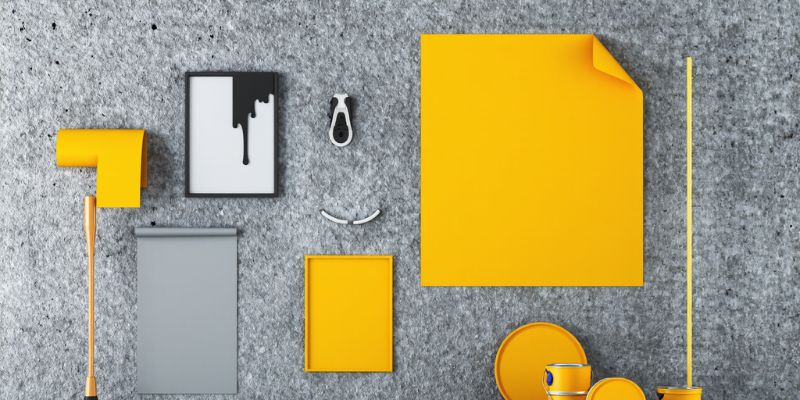
Adding decorations can turn a simple track into a themed racing adventure.
- Paint and markers: Customize track sections with vibrant colors or designs.
- Stickers and decals: Personalize the course with team logos, race numbers, or themed stickers.
- Barriers and guardrails: Use small walls or fences to prevent marbles from falling off the track.
- Themed additions: Include mini-figures, scenery, or props for immersive themed experiences (e.g., space, jungle, city)
Decorations enhance the look and make the race more engaging and immersive.
Option tools
These tools can make building your indoor marble racing track more precise and efficient.
- Scissors or box cutters: For cutting cardboard, foam, or lightweight materials.
- Hot glue gun: Provides a stronger hold for heavier materials or quick fixes.
- Ruler or measuring tape: Ensures accurate measurements for track section and spacing.
- Craft knife: Helpful for detailed cutting and shaping of materials
Having the right tools makes building your track easier and ensures everything fits smoothly.
Start simple and expand your track as you become more comfortable with the materials and tools. Combining different materials and creative elements can create a more dynamic and exciting indoor marble racing track that offers endless fun and customization.
Step-by-step guide to building an indoor marble racing track
Creating an indoor marble racing track is fun and rewarding; following these steps will help you build a smooth and exciting track for endless racing fun.
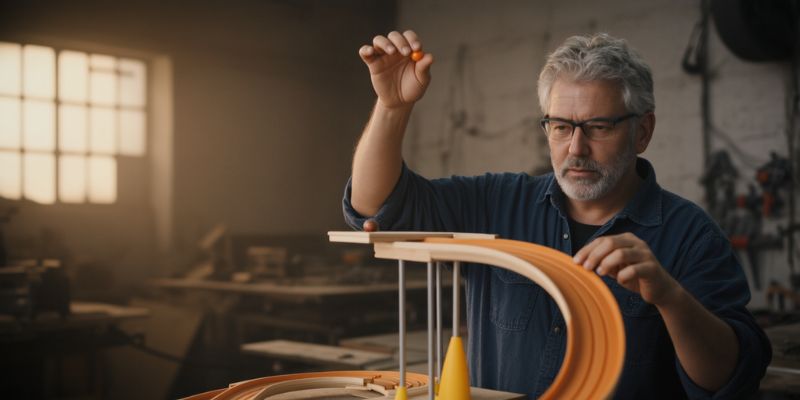
Step 1: Sketch the layout
Start by planning your track design to map out how the marbles will travel from start to finish.
- Draw a blueprint: Sketch the components, such as ramps, curves, funnels, and obstacles.
- Plan the flow: Think about how the marble will move. Do you want a fast-paced track or one full of twists and challenges?
- Consider space: Match your design to the available space to avoid making the track too large or too small.
Tip: Incorporate straight sections for speed, curves, or obstacles to make the race more exciting.
Step 2: Building a sturdy base and supports
A solid foundation is essential for keeping your track stable and functioning correctly.
- Choose a base: Use a large table, wooden board, or sturdy cardboard as the leading platform.
- Add supports: Reinforce ramps and elevated sections with blocks, foam, or brackets to prevent wobbling.
- Secure everything: Use glue, tape, or connectors to keep the structure firm and durable.
Tip: Double-check that the base is level to avoid marbles drifting off course.
Step 3: Assemble tracks with smooth transitions
It’s time to bring your layout to life by building the track.
- Start with the main path: Lay down the primary track sections, ensuring smooth connections between pieces.
- Add slopes and curves: Gradually build ramps, turns, and drops for variety.
- Test for smoothness: Make sure marbles roll continuously without getting stuck or losing momentum.
Tip: Use foam tubes or plastic tracks to create seamless transitions between sections.
Step 4: Add obstacles and features for excitement
Enhance your track with interactive elements to make races more unpredictable and engaging.
- Funnels and spirals: Slow down marbles and add suspense.
- Jumps and gaps: Introduce risky sections that test marble speed and precision.
- Split paths: Offer multiple routes to add strategic elements to races.
- Barriers: Install walls or rails to keep marbles on track
Tip: Balance the track with speed sections and technical challenges to keep races fun and fair.
Step 5: Test and adjust the track
No track is perfect for the first try – testing and tweaking are key to smooth and exciting races.
- Run multiple marbles: Use different types and weights of marbles to identify problem areas.
- Fix problem spots: Adjust steep slopes, smooth out rough edges, and fic unstable sections.
- Fine-tune obstacles: Make sure obstacles are challenging but not impossible to pass.
- Add finishing touches: Decorate the track with themes, colors, or team logos for extra flair.
Tip: Don’t be afraid to experiment with new features or layouts after testing.
Building an indoor marble racing track involves creativity, experimentation, and fun. By following these steps, you can create a challenging, exciting, and unique track.
Design ideas for indoor marble tracks
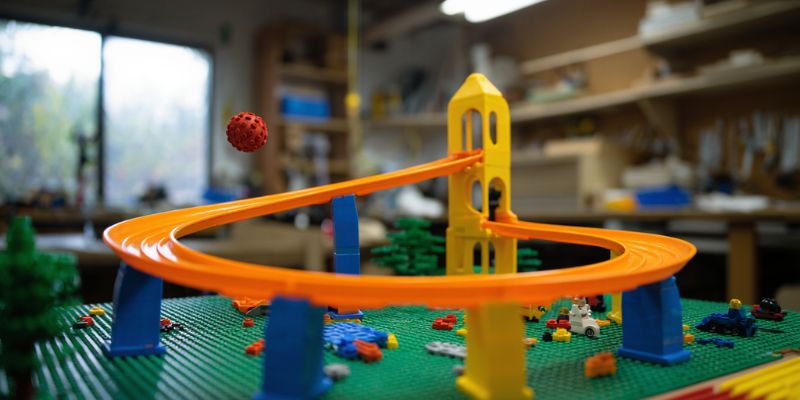
Designing an indoor marble racing track is where creativity truly shines. Beyond building functional courses, adding thoughtful design elements can make races more exciting, challenging, and visually engaging. Here are some fun and creative design ideas to take your indoor marble track to the next level:
Modular track
Modular tracks are perfect for builders who love experimenting and customizing layouts.
- Interlocking piece: Use materials like LEGO bricks, plastic track kits, or wooden segments that can easily connected and rearranged.
- Expandable layouts: Start small and expand over time by adding new sections, curves, and obstacles.
- Easy to modify: Quickly change the track design between races to keep the competition fresh.
Pro tip: Modular design makes mixing and matching different track styles easy for endless racing possibilities.
Themed designs
Incorporating a theme into your marble track adds a layer of storytelling and excitement.
- Space adventure: Add planets, rockets, and craters for a galactic race through space.
- Jungle safari: Create a wild jungle course using green decorations, vines, and mini animal figures.
- Cityscape: Build skyscrapers, roads, and bridges for an urban marble race through a bustling city.
- Fantasy worlds: Include castles, dragons, and magical tunnels for a whimsical experience.
Tip: Combine colors, props, and sound to bring your chosen theme to life and make the race more immersive.
Multi-level track
Maximize your indoor space by building vertical layers that add complexity and speed to your track.
- Layered layouts: Stack ramps, tunnels, and platforms to create a track with multiple levels.
- Gravity drops: Add steep vertical drops for thrilling speed boosts.
- Overlapping paths: Let marbles cross over or under sections of the track for visual excitement.
Tip: Use sturdy materials like wood or reinforced plastic for higher levels to ensure stability.
Obstacle challenges
Incorporate creative obstacles to make races more challenging and unpredictable.
- Spinning barriers: Install rotating arms or spinning wheels that marbles must dodge.
- Loop-the-loops: Add circular loops to test the marble’s speed and momentum.
- Funnels and Spirals: Slow marbles down in a swirling motion before dropping them back into the race.
- Jumps and gaps: Design small jumps or ramps that require precision to cross.
Tip: Balance obstacles with smooth sections to keep the race exciting without being too complicated.
Combining different design ideas – like modular layouts, themes, multi-level structures, and obstacle challenges – creates a more dynamic and engaging indoor marble racing track. The best part is that you’re only limited by your imagination. Don’t be afraid to experiment and customize your track to make each race feel like a brand-new adventure.
Common challenges and how to overcome them
Building an indoor marble racing track can be exciting but also challenging. From managing limited space to ensuring smooth marble movement, overcoming these obstacles is key to creating a successful and enjoyable track. Here’s how to solve the most common problems when building your indoor marble racing track.
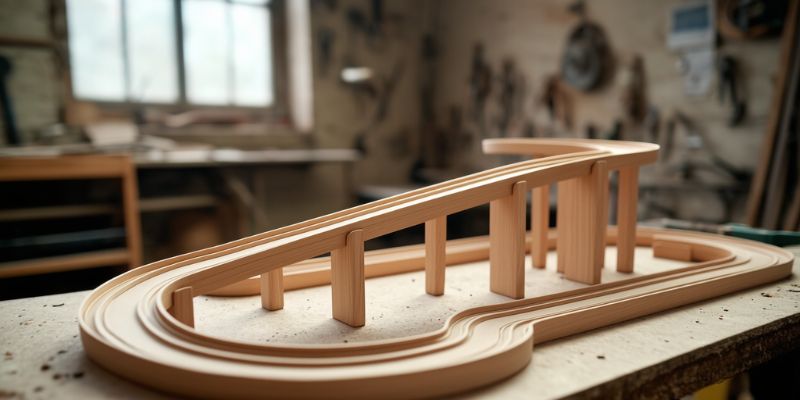
Space limitations
Indoor spaces can be tight, but that does not mean your track has to be small.
- Vertical designs: Build upwards instead of outwards, incorporating multi-level tracks, ramps, and drops to maximize limited space.
- Modular setups: Use interlocking pieces (like LEGO or plastic track kits) that can be easily rearranged to fit different spaces.
- Foldable or portable tracks: Design tracks that can be folded or disassembled for easy storage when not in use.
Solution: Focus on creating a compact yet dynamic layout by stacking levels and using corners wisely.
Marble control
Marbles can fly off the track quickly or get stuck in tight corners if not adequately guided.
- Add barriers and walls: To keep marbles on course, install guardrails or side barriers along sharp turns and high-speed sections.
- Smooth curves: Avoid sharp angles – use gradual turns and wide curves to maintain marble flow.
- Safety nets or catchers: Place soft barriers or containers at track ends to safely catch marbles.
Solution: Incorporate protective walls and gradual transitions to prevent marbles from derailing.
Smooth-rolling
A track with uneven joints or rough surfaces can disrupt marble movement.
- Secure joints: Ensure all track sections are tightly connected to avoid bumps and gaps.
- Smooth transitions: Sand down or adjust edges where different materials meet to prevent marbles from getting stuck.
- Use high-quality materials: Choose smoother materials like plastic, PVC, or polished wood for rolling surfaces.
Solution: Regularly test the track and adjust problem areas to ensure continuous, smooth rolling.
Track stability
A wobbly or unstable track can ruin the racing experience.
- Reinforce the base: Use a sturdy foundation like a wooden board or a heavy tabletop to prevent movement.
- Secure connections: Use glue, tape, or brackets to fasten loose parts and solidify the structure.
- Balance the weight: Distribute weight evenly, especially with multi-level designs, to avoid tipping.
Solution: Double-check the track’s stability before racing and reinforce weak points for a more reliable setup.
Every build comes with challenges, but planning and creativity can quickly solve these issues. Maximizing space, improving marble control, ensuring smooth rolling, and reinforcing stability will create a functional, fun, and exciting track to race.
Best marbles for indoor track
Choosing the right marbles is just as important as designing the track itself. The type of marble you use can significantly impact your indoor marble racing track’s speed, control, and overall racing experience. Here’s a breakdown of the best marbles for indoor use and how each type can elevate your races.
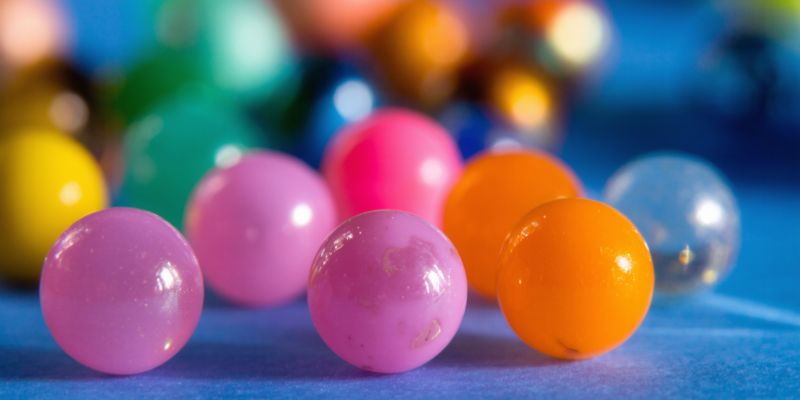
Standard glass marbles
Glass marbles are the most popular and widely used option for indoor tracks.
- Smooth-rolling: Their polished surface ensures a consistent and fluid roll on well-constructed tracks.
- Balanced weight: They strike the perfect balance between being light enough for speed and heavy sufficient for control.
- Various designs are available in multiple colors and patterns, making them ideal for team identification and themed tracks.
Best for: Smooth and precision-designed tracks where consistent performance is key.
Plastic marbles
Plastic marbles are lightweight and safe, especially for younger players or casual setups.
- Lightweight design: Easier for children to handle and less likely to damage floors or track pieces if they fly off.
- Affordable and accessible: Widely available and budget-friendly, making them perfect for beginner racers.
- Safe for indoor use: Soft and durable, reducing the risk of breakage or accidents.
Best for: Family-friendly tracks or when building with dedicated materials like foam or cardboard.
Custom marbles
Custom marbles offer a personalized touch and are great for themed or competitive tracks.
- Unique designs: Customized colors, patterns, or engraving allow for team branding or themed designs.
- Material variety: Available in glass, plastic, or even metal for different racing experiences.
- Increased fan engagement: Fans can support their favorite teams with marbles that reflect their identities.
Best for: Themed track, competitive play, or adding a personal touch to your races.
